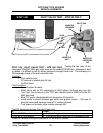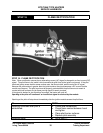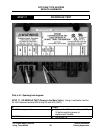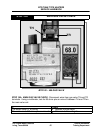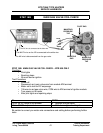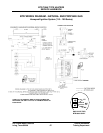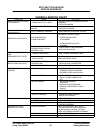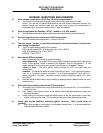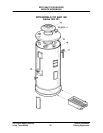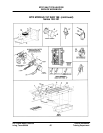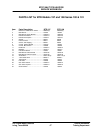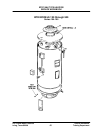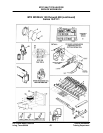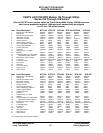
BTRTANKTYPEHEATERS
SERVICE WORKBOOK
A.O. Smith Water Products Service Handbook
Irving, Texas ©2000 Training Department
44
GENERAL QUESTIONS AND ANSWERS
Q. What changes caused series 106/107 and 108/109 to be implemented?
A. The 106 and 107 series units changed from the momentary push button to a slide
switch. The 108 and 109 series implemented a new main burner construction process. The
damper boards with service switch and new style main burners will automatically be
replacement parts for previous series heaters if parts are ordered.
Q. What is unique about the Canadian – BTRC – models vs. U.S. BTR models?
A. The Canadian models have different dimensions to meet Canadian code requirements.
Q: How much electrical power is required for a BTR water heater?
A: The BTR models draw approximately .7 Amps at 120VAC.
Q: The units require "leg kits" to meet National Sanitation Foundation standards. What are the
part numbers for these kits?
A: The BTR model heaters need AOS kit numbers:
BTR 120-400 (except BTR 197&198 series 100) = Part # 6570-0
BTR 197&198 Series 100 = Part # 6570-5
BTR 500 = Part # 6570-7
Q: When should BTRs be delimed?
Many variables affect the liming up process including:
water temperature
- The amount of lime accumulation during the same period of time will be
nearly 2 times greater if water is stored at 140 degrees F than at 120 degrees F. A 180
degree setting will build up lime about seven times as fast as a 140 degree F setting.
volume of water
- The more gallons flowing through the BTR, the more rapid the
accumulation.
hardness
– The harder the water the faster lime build up occurs. 1 to 3.5 grains per gallon is
"soft", 3.5 to 7 grains per gallon is "moderate", 7 to 10.5 grains per gallon is "hard" and 10.5 +
grains per gallon is "very hard". (An aspirin is about 5 grains. One grain is equal to 17.1 parts
per million.)
A: Deliming should be done when a slight rumbling or popping sound is detected when the main
burners are on.
Q: What effect will lime build-up have on the BTR water heater?
A: One eighth inch of scale build-up may reduce efficiency as much as 22%; a 1/4 inch build-up,
as much as 38%.
A: Less efficient heat transfer means more bottom head expansion/contraction stress and
premature leakage.
A: Heavy build-up on the bottom head and bottom portion of the flue pipes leads to more heat
transfer at the top of the flues. This can lead to stacking or erratic thermostat operation.
Q: Anode rods provide additional protection against corrosion. When should these be
replaced?
A: When large gouges or pits appear in the anodes, replace them. It is recommended that
these be inspected every 6 months.



